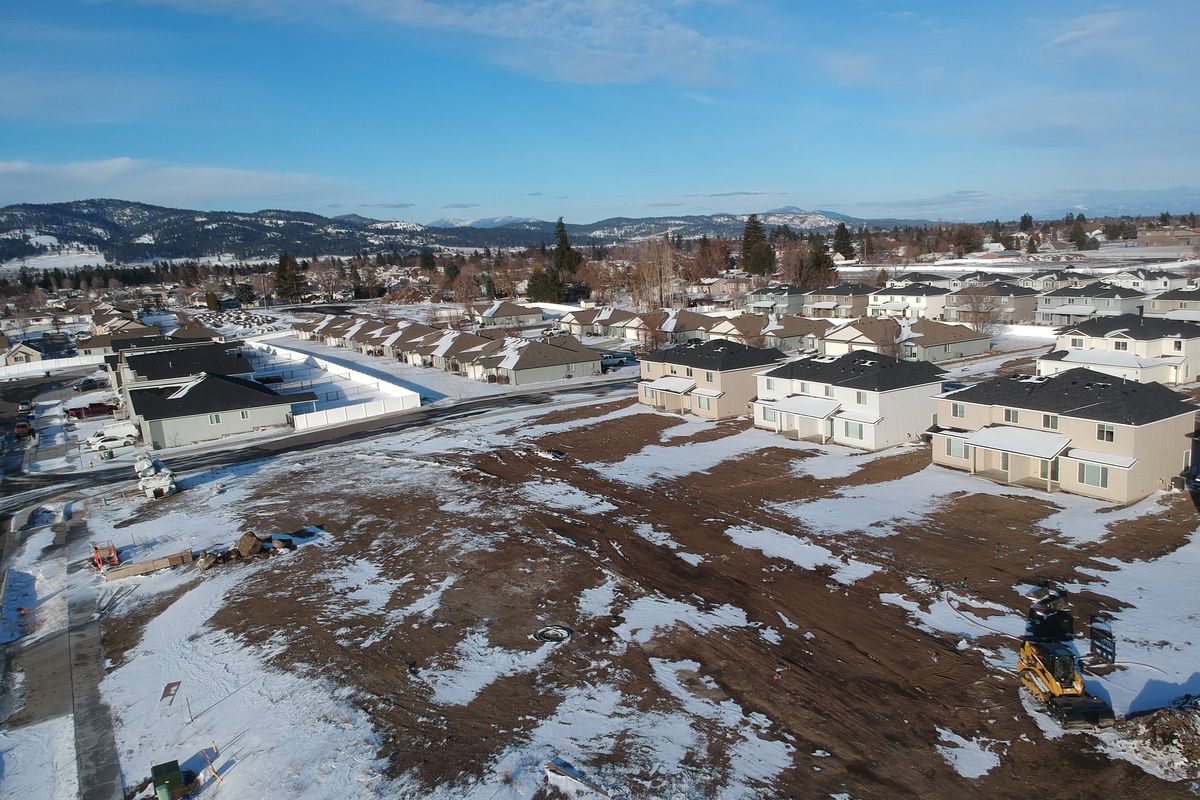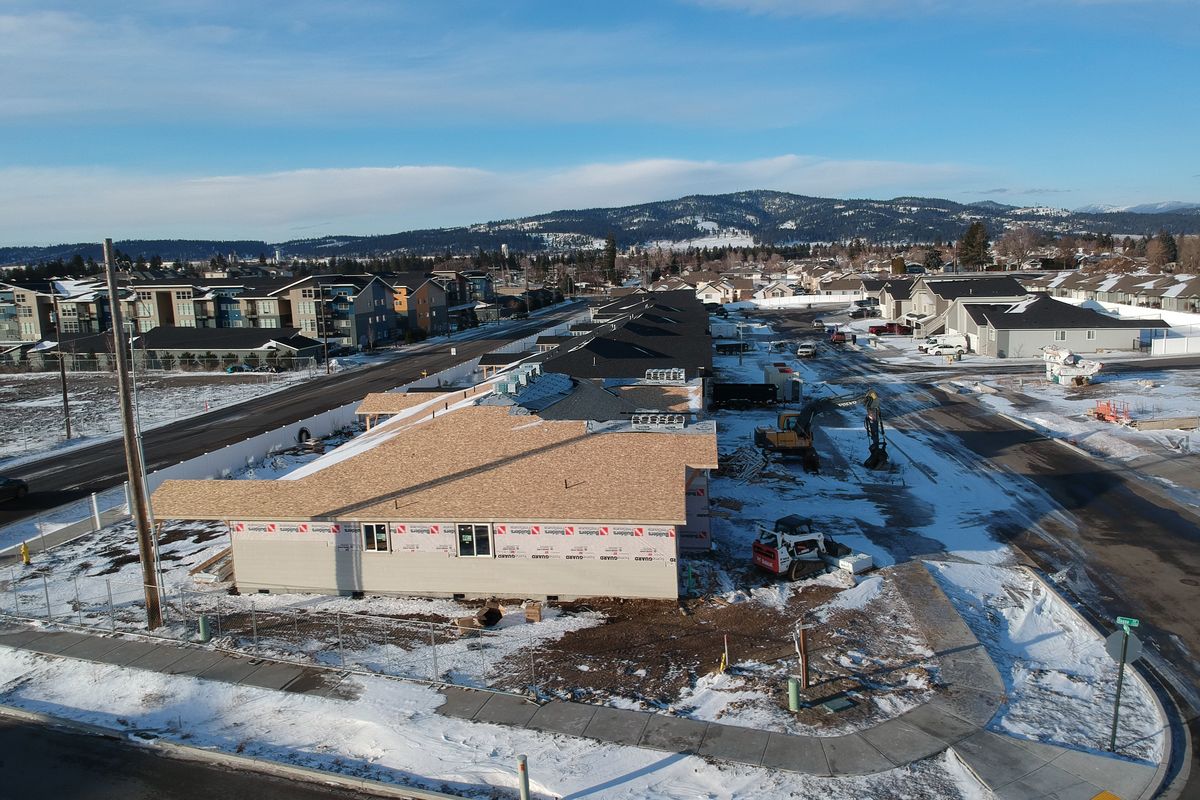Spokane’s housing crunch gets national spotlight

Spokane native Andrew Watson was living in the Bay Area when he decided to move back home several years ago to be closer to family.
Last year Watson and his wife, Cassie, were approved for a $250,000 mortgage and closed on a 1,400-square-foot home near Franklin Park.
The home search wasn’t easy as they contended with multiple offers and finding a property in a desirable neighborhood that met their budget in Spokane’s competitive real estate market, Watson said.
“It was always a trade-off,” he said. “We had to sacrifice something if we wanted to keep it below our budget. Once we were able to get approval for $250,000, it opened up our horizons a little bit. But five years ago, this house we got wouldn’t be worth $250,000. It just wouldn’t.”
More than 30 years ago, Watson’s parents purchased a three-bedroom, two-bathroom home for $60,000.
“The sheer difference between what my parents paid and what we paid is incredible,” he said.
For residents like Watson, it’s widely-known the Spokane area has growing housing demand and dwindling supply, a situation further exacerbated by the pandemic as out-of-area buyers and remote workers fled larger metro areas in search of affordability and a better quality of life.
Open land in Spokane Valley, including this new neighborhood of mostly duplexes, is being filled with homes to try and fill the need for housing in the Spokane area. (Jesse Tinsley/The Spokesman-Review)Buy a print of this photo
But now the spotlight on Spokane’s housing crunch is elevated to a national level.
The New York Times published a story Sunday that shines a light on how city leaders are grappling with how to best address growth and prevent Spokane from experiencing housing affordability issues seen in larger cities, such as Los Angeles and Seattle.
“Being an ‘it’ place was something Spokane’s leaders had long hoped for. The city and its metropolitan region have spent decades trying to convince out-of-town professionals and businesses that it would be a great place to move,” the New York Times article reported. “Now their wish has been granted, and the city is grappling with the consequences.”
Spokane Mayor Nadine Woodward told the reporter even her son and daughter-in-law, newlyweds who moved from Seattle back to Spokane during the pandemic, lived with her and her husband while they searched for a home they could afford.
Woodward said she’s not surprised by the national attention placed on Spokane.
“Spokane has been discovered. I’ve lived here 32 years and I think a lot of people have been very prideful of living in a beautiful area of the country that has been off the radar,” Woodward said. “Spokane has seen a lot of migration during the pandemic and an uptick in people migrating from Seattle and California, which of course makes our housing issue that much more of a challenge.”
Spokane County’s median home price was $380,000 in January, a 20.6% increase compared to the $315,000 median price in January 2021, according to data from the Spokane Association of Realtors. That’s making homes in Spokane, long a place where housing was plentiful and affordable, out of reach to many locals. The nationwide median price last month was $350,300, according to the National Association of Realtors.
While Spokane’s population has grown an average of about 1% every year for the past decade, housing development has not kept up with that growth.
Woodward said the New York Times article accurately depicted what is occurring in the local housing market where first time homebuyers and locals are competing against people selling homes in larger, more expensive cities. Those buyers are taking that equity and then purchasing properties in Spokane.
“I hope we are able to offer solutions and incentives and get more residential projects built and complete,” she said, adding the city needs a variety of housing types.
A first-time buyer is generally defined as someone who can afford to front 5% of the purchase price of a home and someone who makes at least 70% of the median income for the area, said James Young, director of the Washington Center for Real Estate Research at the University of Washington.
“In Spokane, the median house was affordable to first-time buyers 10 years ago,” Young said. “Now it’s not affordable at all. Now, it’s overpriced by 11 or 12% in terms of what a first-time buyer is able to afford.”
To put it another way, some 53% of the houses sold in Spokane County in 2012 were affordable to someone who qualifies as a first-time buyer, he said. By 2020, that number had fallen to 14.8%
“You are going to have situations where first-time buyers can’t buy because people with equity are outgunning them,” he said. “So, first-time buyers are in a world of hurt.”
Without home ownership as an option, would-be buyers then have to turn to the rental market.
“Landlords have increased the rents because they know those folks don’t have anywhere to go,” he said. “The problems don’t go up the ladder they go down. All of a sudden, it pays to tear down that old building and make those people homeless and put new apartments there.”
“The further down the ladder, what you get is more homelessness, higher rents and less cost certainty for people,” Young said.
Woodward declared a housing emergency last July that called for dozens of actions to boost housing availability in partnership with the City Council.
Since then, the city has reduced permitting time for housing developments and appointed Spencer Gardner as its new planning director, a position that was vacant for several years. The city also hired Steve MacDonald as director of community and economic development.
Woodward said she would like to see developers build more projects similar to Kendall Yards. There’s also opportunity to convert commercial buildings into residential housing downtown, she added.
The city is working on implementing its housing action plan to spur more housing options for residents. A housing task force is expected to meet next month to discuss how to address housing quality and affordability, Woodward said.
“I want to broaden that to a regional task force. … I think this really deserves a regional conversation,” Woodward said.
The Realtors association in partnership with the Counselors of Real Estate’s Consulting Corps released a report in December stating Spokane County’s growing housing demand could be met by increasing density, creating mixed-use neighborhoods and changing zoning regulations and city codes to boost land availability.
The group analyzed the county’s housing and population statistics, in addition to interviewing area policymakers, developers, builders and civic leaders to compile the report.
Tom Clark, broker with Kestell Co. Realtors and governmental affairs committee chairman for the Spokane Association of Realtors, said the New York Times story provided an accurate analysis of Spokane’s housing market.
“The fact is it’s not a mystery to us we are in a housing crisis,” he said. “We have some serious housing issues.”
Clark said addressing the city’s housing shortage will take a multifaceted approach that would need to include changes in zoning, building codes and permitting processes.
Woodward agrees the city needs to take an aggressive approach to addressing Spokane’s housing shortage.
Zillow economists expect remote workers to continue seeking affordable midsized markets like Spokane and Realtor.com forecasts the Lilac City will be the third-hottest housing market in the nation this year behind Salt Lake City and Boise.
Greg Deckard, CEO and chairman of Spokane-based State Bank Northwest, said demand remains high for home loans even though the number of refinanced loans has dropped somewhat.
“In my perspective, there are too many buyers chasing too few homes,” he said. “Most people who are buying a house are buying a payment. When you have this squeeze when home sales are going above asking price, and there are bidding wars, that combined with interest rates are going to disproportionately hurt first-time home buyers.”
Clark anticipates Spokane’s home prices may continue to rise if lack of inventory persists. He encourages city leaders to take action.
“I think people are looking for solutions and there is no time like the present,” he said.
Watson, the homeowner, is relieved he was able to purchase a home before prices climb even higher.
“We knew that the sooner we got into a house the better off we would be because we have this upward trajectory in housing prices,” he said. “It was still more than what we think we should have paid, but at the end of the day we have the house. Ultimately, that’s the biggest thing – that we have shelter and somewhere to exist.”




